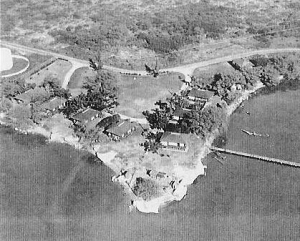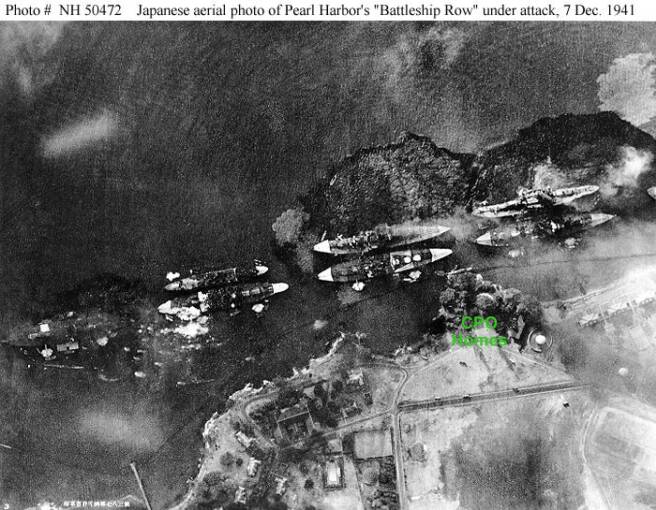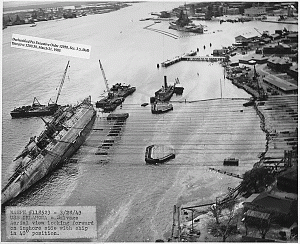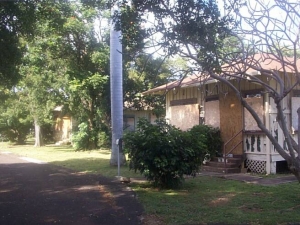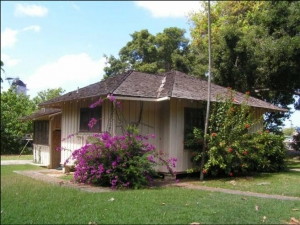In 1923, six one-story houses are built on Belleau Woods Loop for married Chief Petty Officers (CPOs). These houses were physically separate from the Nob Hill homes, but were also northeast of the aviation facilities.
In 1932, three additional CPO houses were added to the original six. However, sometime in the 1930s, one of the homes was demolished.
In 1937, nine four-plex homes were built on the land created by landfill.
In 1939, three additional CPO houses were built close to the four-plexes. These houses are known as facilities 68, 69, and 90.
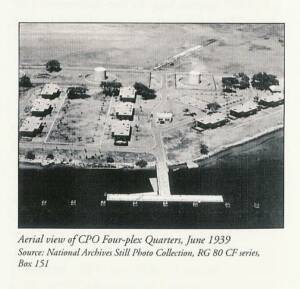 On December 7, 1941, the USS Maryland, USS Oklahoma, USS Arizona, and USS Nevada were moored on Battleship Row adjacent to and upwind of this neighborhood. One of these homes even caught fire that day.
On December 7, 1941, the USS Maryland, USS Oklahoma, USS Arizona, and USS Nevada were moored on Battleship Row adjacent to and upwind of this neighborhood. One of these homes even caught fire that day.
As the nearby battleships burned, oil soaked sailors swam ashore in the yards of these homes. Some survivors tell of clothes being grabbed off the clotheslines.
These were demolished by 1979, probably because they were built on landfill.
If These Walls Could Speak: Refloating a Capsized Battleship
Although the smoke had cleared, and new camouflaged paint schemes covered the charred CPO homes, the neighborhood was far from quiet for years following the Pearl Harbor attack. The USS Oklahoma capsized and sank in the back yards of these homes. In the years years following, the Pearl Harbor Naval Shipyard accomplished one of the greatest feats of the war: refloating a fleet of battleships, including righting the capsized USS Oklahoma.
The CPO bungalows were situated in the center of the massive machinery used to overturn the battleship. Crews work 24 hours a day. Meanwhile, salvage work on the other sunken ships nearby also insured a very noisy neighborhood throughout the war. If the families had not been evacuated in 1941, they would not have slept much.
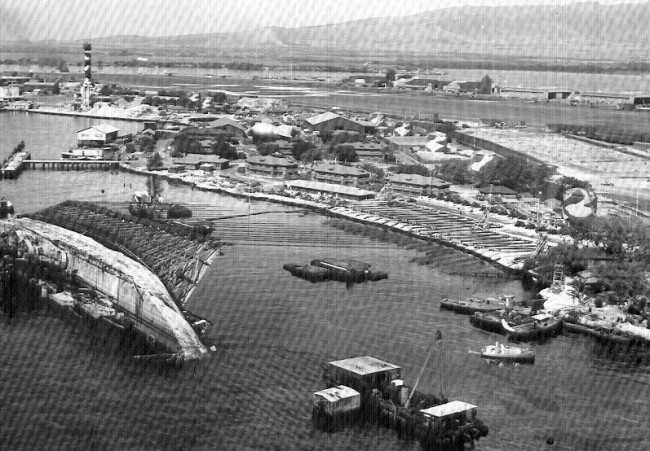
The recovery of the capsized USS Oklahoma took years. In this photo, the tanks interspersed among the four-plexes are no longer white, the Ford Island air tower is complete, and the CPO bungalows on Belleau Woods are in the middle of the extensive recovery effort. Source: National Archives
The Moving Homes
By 1953, two of the homes (69 and 90) that were by the four-plexes were moved to Belleau Woods Loop, where two demolished 1923 homes were originally built. Facility 30 was moved to the Nob Hill neighborhood, where it was used as the home of John Wayne’s character in the 1965 movie In Harm’s Way. The home remains a part of the Nob Hill neighborhood and is currently undergoing restoration.
By 1978, building 69 had been demolished, leaving a gap in the layout of the neighborhood.
During World War II, other buildings resided on Belleau Woods Loop, including a CPO mess. By the 1950s, these WWII buildings were demolished, bringing the houses back to the open setting of the 1930s.
Neglect of the CPO Neighborhood
Sadly, only six of the homes remain today. One of them, the John Wayne home (building 30), is still actively used by the Navy as family quarters in Nob Hill.
The remaining homes have seen better days. The Navy originally slated the homes to be demolished in the late 1990s. However, thanks to community interest, including that of Historic Hawaii Foundation, the Navy has been looking for caretakers of the bungalows since about 2001.
Since the last families moved out in the 1990s, they have remained vacant. One of the homes, building 29, has a large hole in the roof that has left the interior exposed to the elements for over 10 years.
In 2005, Historic Hawaii Foundation named the CPO Bungalows as one of the Nine Most Endangered Sites in Hawaii, published in Honolulu Magazine.
In 2008, the bungalows were included in the World War II Valor in the Pacific National Monument and should fall under the management of the National Park Service. At 2009, the National Park Service had not taken custody.


